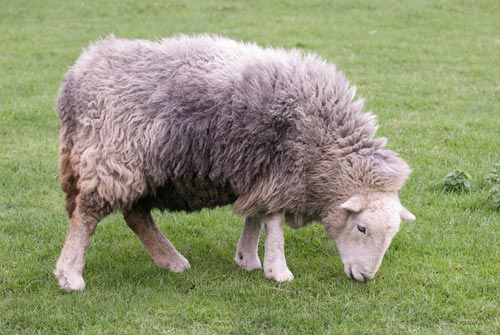Beatrix Potter, the internationally known children’s story writer and illustrator, and creator of the character Peter Rabbit, was a keen supporter of the Herdwick breed of sheep and helped save it from extinction.

This was part of her wider vision to preserve that part of England known as the Lake District. She wanted to preserve it from irresponsible development and ensure that so far as possible it would continue to be farmed in the way that had shaped its landscape over hundreds of years.
Part of what formed her vision is the contact she had with the founders of the National Trust, an independent charity formed in 1895 and dedicated to the preservation of the English countryside.
She and the Trust worked together, including farming some farms jointly to prevent them being broken up.
Beatrix Potter died in 1943 and at the time of her death she owned several farms in the Lake District totaling more that 4,000 acres (1,600 hectares), all of which she dedicated to be left to the National Trust following the death of her husband in 1945.
In 1951 an area of 885 square miles (2,230 square kilometres) was dedicated as the The Lake District National Park, ensuring it would be preserved from development.
National Parks in Great Britain are controlled and funded by the UK government. The farms that Beatrix Potter owned lies within the Lake District National Park and therefore have the double protection of being within the Lake District National Park and also owned by the National Trust.
Beatrix Potter’s farms comprise less than one percent of the Lake District National Park but her vision and that of the National Trust were instrumental in moulding the attitudes that resulted in the creation of the National Parks.
She bought Troutbeck Park Farm in the 1920s and built up a flock of over 1,000 Herdwick sheep, which she did in part because she felt they should be preserved as a breed because they were indigenous to the Lakeland fells with a history going back hundreds of years.
Herdwicks were under threat because they are slow growing sheep which give birth to fewer lambs than lowland sheep and therefore struggled on the balance sheets of working farmers against the advantages of other breeds.
Following her death the farms she owned and her Herdwick flocks were endowed to the National Trust with conditions attached to the continuation of the Herdwick breed.
The outbreaks of Foot and Mouth disease in England in recent years have again put strain on the viablility of the breed. This has made the conditions attaching to Beatrix Potter’s endowment to the National Trust an important factor in maintaining Herdwicks as a breed.
Herdwicks have magnificent coats with a lovely mix of gray, white, and brown wool. They are described as being hefted to the hill on which they are raised, which means that they know their home and will not stray from it.
And while Herdwicks are local to the Lake District, I took this photograph of a Herdwick sheep at a model farm in Yorkshire that specializes in maintaining a mixed flock of original English breeds.
You can send distinctive ecards featuring our photographs by Joining Quillcards.